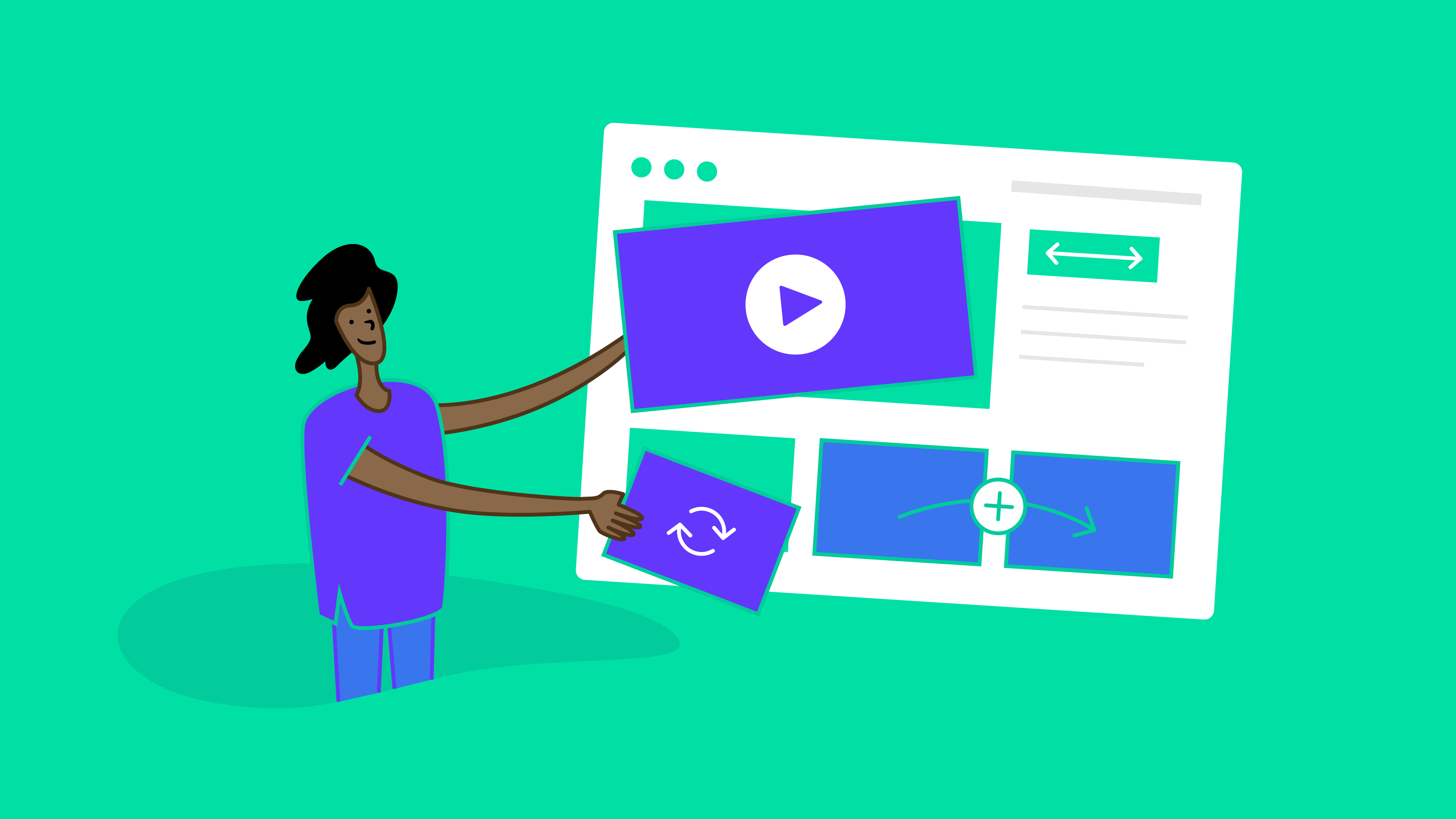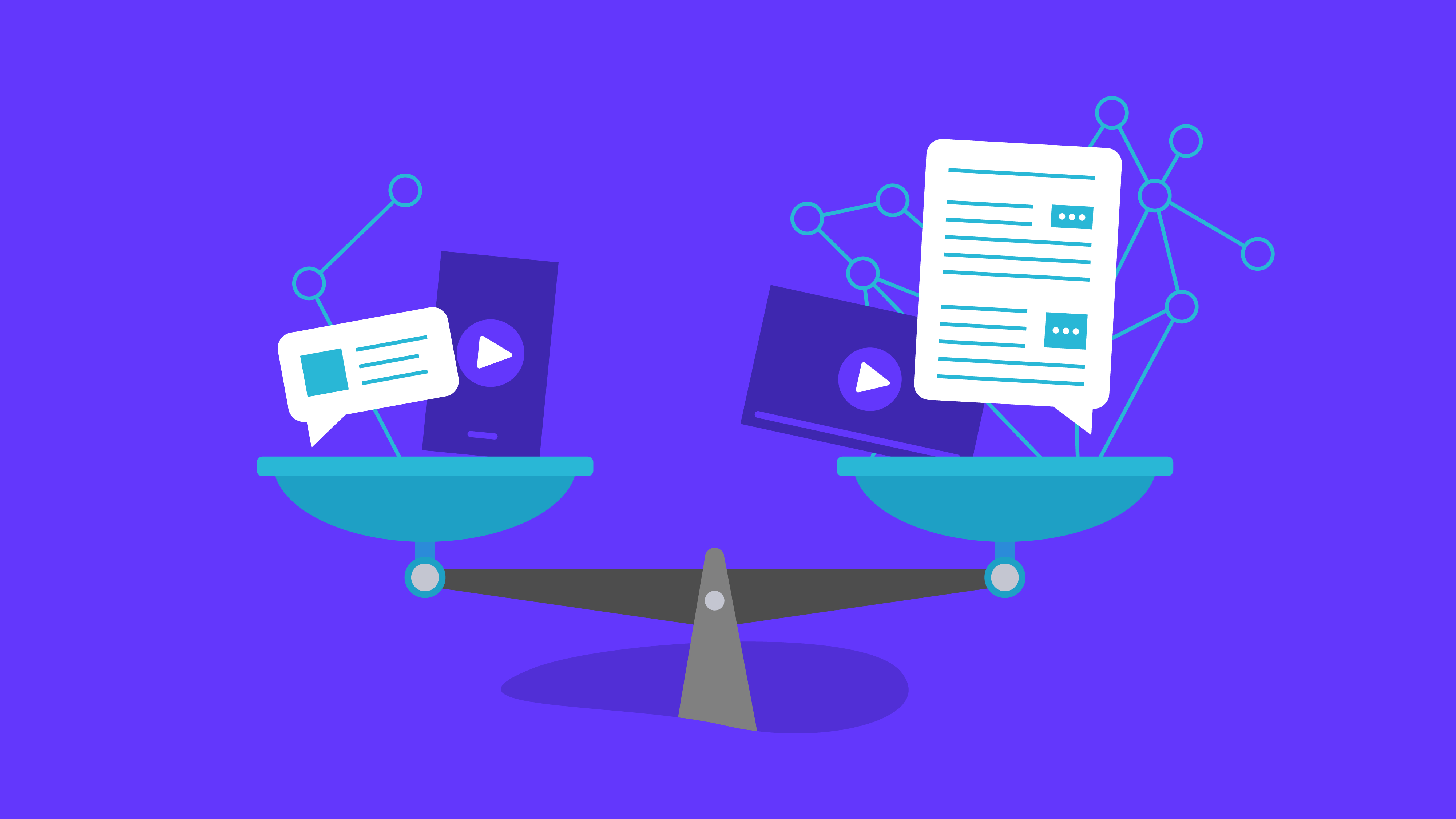we can help
Knowing why people search for something is important — especially for B2B SaaS companies looking to grow through organic search.
That’s search intent, and it can make a big difference. Search intent can turn your content from something that exists online to something that gets people to take action.
B2B SaaS is competitive, so grabbing your potential customers’ attention, showing them that you can address their pain points, and giving them a clear next step can mean the difference between pulling in new customers and losing them to the competition.
Below, we’ll break down the different kinds of search intent, give some examples that are specific to the B2B SaaS world, and talk about how you can use this info to create content that not only shows up in search results but also gets results.
What is search intent?
Search intent (or “user intent”) is the purpose or goal that a person has in mind when typing a key term into a search engine. It's the reason behind the search; whether the user is looking to learn something new, find a specific website, make a purchase, or compare products.
Understanding search intent is about recognizing what users are really looking for when they’re searching online, which can range from seeking general knowledge about a topic to having a clear intent to buy a product or service.
Most searches can be bucketed into one of a few intent categories, which we’ll touch on a little later. But regardless of the type of intent, there are a few things we consider when we’re using search intent to build content:
- Content optimization: By understanding the intent behind specific keywords, businesses can create content that matches what customers are looking for. This helps improve the relevance of your content and increases the likelihood of ranking higher in search results.
- User experience: Aligning content with search intent improves the user experience by providing users with the information they are seeking. This can lead to higher engagement, longer time on site, and ultimately, higher conversion rates.
- Competitive advantage: Understanding search intent can help identify potential gaps in your content strategy and opportunities to differentiate your business from competitors in a crowded market.
We also take this framework a step further, looking at search intent on a post-by-post basis. This allows us to evaluate how a piece of content might help move searchers further down the funnel — or drive a conversion — and how it fits into the context of a brand's unique point of view.
Why is it important?
Recognizing the importance of search intent is important for several reasons, especially in the context of SEO and content marketing.
It allows your business to create content that directly addresses your target audience’s needs and questions at different stages of the buyer journey. This improves the relevance and value of your online presence.
This alignment with user intent not only enhances user satisfaction but also significantly increases the chances of your content ranking higher in search engine results pages (SERPs) — as search engines like Google aim to provide users with the most relevant results.
B2B buying journeys are typically longer and more complex than in B2C. Some sales cycles range from six months to a full year. Throughout this time, customers will go from seeking content that provides actionable solutions for their pain points, to product-oriented solutions, and finally, to comparisons and case studies that help them make confident, informed software choices.
Consider key points in the buyer journey: initial awareness, consideration, and decision-making. Aligning your content to these key moments ultimately leads to increased conversions, customer acquisition, and growth.
Aligning content with search intent can help overcome skepticism and build trust with prospects who may have had negative experiences with other SaaS solutions. This way, your business can demonstrate a deep understanding of your customers’ challenges and offer clear, actionable solutions.
How is search intent different in B2B SaaS?
In B2B SaaS, understanding search intent has some nuance:
- Sales cycles can be longer due to the complexity and cost of the product.
- Many operate on a subscription model that has a high average order value.
- Decision makers might deal with a lot more internal red tape before they can get approval to purchase and roll out a new SaaS solution.
The layers of content to support this process need to consider most if not all oppositions and value propositions to drive higher engagement throughout the funnel.
B2B decision-makers are performing searches with a clear purpose and expect detailed, relevant answers. For instance, a search like "best project management software for small teams" isn't just a general inquiry — it's a specific request for software that fits small teams, with an expectation of finding content that covers features, pricing, and how well it suits their unique needs.
To stand out, B2B SaaS companies need to tailor their content to meet these specific queries. This involves more than just targeting broad keywords; it's about evaluating how the user is asking and answering questions as they move from problem-aware to solution-aware.
Whether it's through comparison guides, detailed feature pages, integrations pages, downloadable assets, templates, or success stories, showing that your solution aligns with their specific requirements is key to winning their trust and business.
4 types of search intent and how they impact your business
When it comes to SEO and creating content that resonates, you need to start by understanding the four main types of search intent. Each type reflects a different user need or stage in the buying journey — especially in the B2B SaaS space.
By tailoring your content to these intents, you can more effectively reach and engage your target audience.
1. Navigational
Navigational intent is when someone searches for a specific website or page. For example, if someone types "Salesforce login" into a search engine, their intent is clear — they're trying to find the Salesforce login page.
Users who perform navigational searches are typically already familiar with your brand or product. For B2B SaaS companies, optimizing for navigational intent means ensuring your brand and product pages are clearly labeled and easy to find.
Addressing navigational intent can enhance brand visibility and user experience, making it easier for existing or potential customers to find your website, product pages, or specific resources. This directly influences customer satisfaction, as users can quickly find what they need without frustration.

2. Informational
Informational intent searches are all about looking for information. These can range from broad queries like "What is CRM software?" to more specific ones like "How to integrate CRM with email marketing."
Informational searches represent a significant opportunity to capture attention early on in the buyers’ journey. By providing valuable, informative content that answers customers’ questions or educates them on relevant topics, you can establish your brand as a thought leader and a trustworthy source of information.
This not only improves your search engine rankings but also builds brand awareness and trust — crucial for nurturing leads and guiding them down the sales funnel.

3. Commercial
Users with commercial intent are considering a purchase and are looking for information to help them compare options or make a decision. Searches might include terms like "best project management software" or "Salesforce vs. HubSpot."
To address commercial intent, B2B SaaS companies should create content that compares features, prices, and benefits of their products against competitors, or showcases reviews and testimonials that help build trust and authority.
Targeting this intent with content that showcases the unique value proposition and benefits of your product, you can influence their decision-making process in your favor. This type of intent-driven content can differentiate your offering from competitors, increase brand preference, and ultimately drive more qualified leads who are closer to making a purchase decision.

4. Transactional
Transactional intent is when a searcher is ready to buy. These searches might include specific product names, or terms like "buy," "subscribe," or "demo." For example, "buy Slack for enterprise" indicates the user is ready to make a purchase.
B2B SaaS companies should optimize their product, pricing, and checkout pages for transactional intent, making it as easy as possible for users to take the next step toward purchase.
Optimizing for transactional intent can directly increase conversions and revenue, as you're targeting individuals at the bottom of the sales funnel with a high intent to purchase. Ensuring that your product pages, pricing information, and checkout process are optimized for these searches can significantly improve the user experience, reduce barriers to conversion, and improve the effectiveness of your sales process.

Tailoring content to match search intent
Creating content that aligns with search intent is essential for any B2B SaaS company looking to boost its SEO and connect more effectively with its target audience.
Let’s look at how you can tailor both new and existing content to address search intent, meet your target customers’ needs, and guide them down the funnel.
New content
When developing new content, identify the search intent related to your product or service. Use keyword research tools to discover what your potential customers are searching for and the intent behind these searches.
For informational intent, consider crafting detailed blog posts, how-to guides, or whitepapers that answer common questions or explain industry concepts. The goal here isn’t necessarily for the customer to make a purchase (but it’s a nice bonus if they do). Instead, the user should walk away from informational content should valuable, actionable, knowledge that addresses a pain point and helps position your brand as an expert on the topic.
For commercial and transactional intents, create comparison pages, case studies, or product pages that highlight your product's benefits and features. These pages must speak to your ideal customer personas by differentiating your product’s unique value over the competition. Each piece of content should be designed with the user's specific funnel stage in mind, ensuring it provides the value and information they need to make a buying decision.
Optimizing existing content
To optimize existing content for search intent, review your current pages to ensure they align with what your audience is searching for.
For informational content, ensure it's comprehensive, engaging, and thoroughly answers your audience's questions. Provide high-quality, well-researched information that is informative and valuable to your audience. Your content should also provide actionable advice with practical tips, advice, and solutions to help users solve their problems or achieve their goals.
Pages targeting navigational or transactional intent should be straightforward to navigate, with clear calls to action like "Learn More," "Shop Now," or "Contact Us." Use compelling language and visuals to highlight your product’s value proposition and differentiate your offerings from competitors. Give your readers detailed information to support decision-making or purchases, like transparent pricing information, shipping details, and return policies.
Use analytics to gauge content performance and update it to maintain or enhance its relevance and effectiveness in satisfying user intent. This approach not only boosts SEO but also improves the user experience, leading to better engagement and conversion rates.
Measuring the success of your intent-led content
Measuring the success of your intent-led content strategy is crucial to understanding how well your content meets the needs of your audience and contributes to your business goals.
Start by defining clear, measurable objectives for each piece of content, aligning with the specific search intent it targets.
For informational content, metrics like page views, time spent on page, and social shares can indicate engagement and interest. With commercial and transactional content, look at conversion rates, click-through rates (CTRs), and the number of leads or sales generated.
Using tools like Google Analytics, SEMrush, or HubSpot can provide deep insights into how users interact with your content and where there might be opportunities for optimization. Regularly tracking these metrics against your goals allows you to fine-tune your strategy and make data-driven decisions to improve your content’s performance and ROI.
What if a piece of content has the wrong intent?
Discovering that your content doesn't match the search intent of your audience can be a setback. Intent mismatch can lead to decreased engagement, weaker SEO results, and a disconnect with potential customers.
However, it’s not the end of the line.
To address intent mismatch, take a closer look at the content’s performance, specifically through metrics like bounce rates and conversion rates. This analysis helps identify whether the audience is seeking information but encountering sales content, or vice versa. This is how you’ll begin to sniff out the intent disconnect, which is your first step toward realigning the content with your audience's actual search intent.
Revising misaligned content involves adapting its focus to meet the expected user intent—transforming sales-oriented articles into informative content or enhancing informational pages with clear calls to action for users ready to purchase.
This recalibration process is key for reconnecting with your audience and ensuring your content fulfills their needs and expectations — which is key to improving engagement, boosting SEO performance, and driving organic growth.
Common challenges of search intent
Search intent can present several challenges, especially for B2B SaaS companies trying to precisely align their content with the varied needs of their audience.
One major hurdle is accurately identifying the intent behind specific search queries, as the same phrase can have different meanings in different contexts. Another challenge is the evolving nature of search algorithms and user behaviors, requiring constant adaptation and updates to your content strategy.
It can also be challenging to create high-quality content that genuinely meets each type of search intent, and demands a deep understanding of your audience and the solutions they seek.
To overcome these challenges, you’ll need up-to-date customer data, an understanding of product-market fit and the ICP, and the ability to build content that speaks to key decision-makers and their needs (as it pertains to your product). Tying all of these elements together helps foster an emotional connection to the brand and drives conversions and advocacy.
Grow your organic traffic with high-intent content from Ten Speed
Ten Speed doesn't just help B2B SaaS brands create more content; we're about crafting content that truly resonates with your audience’s specific needs and behaviors.
By understanding and targeting the search intent of your potential customers, we develop content strategies that directly speak to them at every stage of their journey — from discovering your solution to making a decision.
We tap into the unique challenges and queries your target market faces, producing content that's not just visible, but also valued and actionable. This focus on high-intent content not only boosts your SEO rankings but also increases user engagement and conversion rates.
Accelerate your growth through strategic, high-intent content that attracts more qualified leads. Set up a call to see if Ten Speed is the partner your business needs.


Discover how we can help.
Book a call with us and we’ll learn all about your company and goals.
If there’s a fit, we will put together a proposal for you that highlights your opportunity and includes our strategic recommendations.




